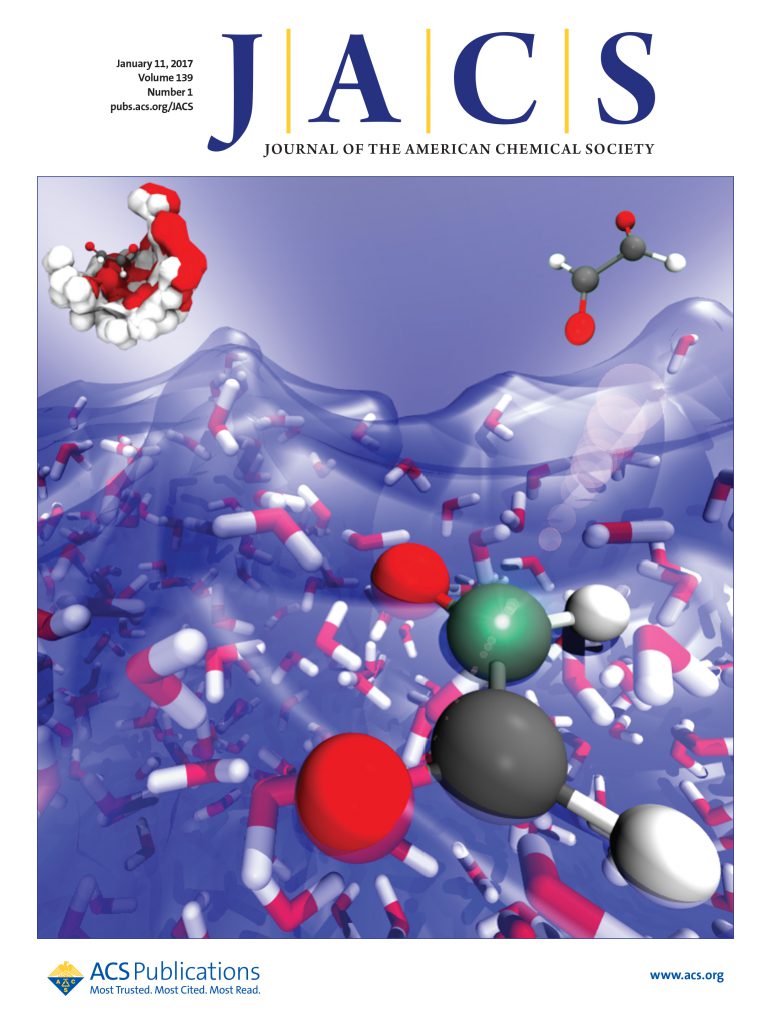Binding-Enhanced Organic Semiconductor-Bacteria Hybrids for Efficient Visible Light-Driven CO2 Conversion to Bioplastics.
IF 14.4
1区 化学
Q1 CHEMISTRY, MULTIDISCIPLINARY
引用次数: 0
Abstract
Photosynthetic semiconductor-biohybrids, which integrate excellent light-harvesting capabilities of semiconductors and high activity and selectivity of biocatalysts, have proven a promising strategy to enable solar-driven CO2 conversion to chemicals. However, broadening the light-harvesting scope and strengthening interfacial contact, which facilitates enhancing solar-to-chemical conversion efficiencies, remain challenging. Herein, we report a series of organic semiconductors (OSCs) to hybridize with nonphotosynthetic bacteria, Ralstonia eutropha, realizing efficient CO2 photoreduction to poly-β-hydroxybutyrate (PHB). The OSCs with extended conjugated backbones absorb light from the entire visible region, while their side chains containing zwitterionic choline phosphate form quadrupoles with phosphatidyl choline on the cell membrane, fortifying interfacial interactions between OSCs and bacteria. Both aspects facilitate the utilization of more photon energy and improve the transmembrane transfer of photogenerated electrons into the cells, strengthening the metabolic pathways in bacteria. Accordingly, an optimal OSC-biohybrid driven by visible light offers continuous production of PHB from CO2 for several days, with a maximum yield of 107.3 mg L-1 OD600-1 and a CO2-to-PHB quantum efficiency of 1.14%. Our strategy not only endows nonphotosynthetic bacteria with photosynthetic capacity but also achieves matchable photoautotrophic PHB output with that from heterotrophic fermentation.结合增强的有机半导体-细菌杂合体用于高效可见光驱动二氧化碳转化为生物塑料。
光合作用的半导体-生物杂交体,结合了半导体出色的光收集能力和生物催化剂的高活性和选择性,已经被证明是一种很有前途的策略,可以将太阳能驱动的二氧化碳转化为化学品。然而,扩大光收集范围和加强界面接触,这有助于提高太阳能-化学转换效率,仍然具有挑战性。在此,我们报道了一系列有机半导体(OSCs)与非光合细菌(Ralstonia eutropha)杂交,实现了CO2光还原为聚β-羟基丁酸盐(PHB)。具有扩展共轭主干的OSCs吸收整个可见区域的光,而其含有两性离子胆碱磷酸的侧链与细胞膜上的磷脂酰胆碱形成四极,加强了OSCs与细菌之间的界面相互作用。这两方面都有助于利用更多的光子能量,并促进光电子跨膜转移到细胞中,加强细菌的代谢途径。因此,在可见光驱动下,最优的osc -生物杂交可以连续数天从CO2中生产PHB,最大产量为107.3 mg L-1 OD600-1, CO2-to-PHB量子效率为1.14%。我们的策略不仅使非光合细菌具有光合能力,而且还能实现与异养发酵相匹配的光自养PHB输出。
本文章由计算机程序翻译,如有差异,请以英文原文为准。
求助全文
约1分钟内获得全文
求助全文
来源期刊
CiteScore
24.40
自引率
6.00%
发文量
2398
审稿时长
1.6 months
期刊介绍:
The flagship journal of the American Chemical Society, known as the Journal of the American Chemical Society (JACS), has been a prestigious publication since its establishment in 1879. It holds a preeminent position in the field of chemistry and related interdisciplinary sciences. JACS is committed to disseminating cutting-edge research papers, covering a wide range of topics, and encompasses approximately 19,000 pages of Articles, Communications, and Perspectives annually. With a weekly publication frequency, JACS plays a vital role in advancing the field of chemistry by providing essential research.

 求助内容:
求助内容: 应助结果提醒方式:
应助结果提醒方式:


